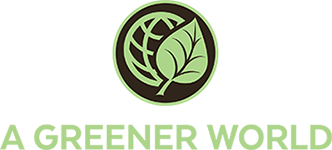Don’t be a Mushroom!
Two separate but very much related events that could radically change the way America farms and feeds itself are big in the news right now. Both concern a matter dear to my heart: Food labeling. As leading food and ag writer, Tom Philpott, recently wrote, the upcoming vote in California on Proposition 37 “could spur a revolution in the way our food is made.” If adopted, Prop 37 would simply require the labeling of food containing genetically modified (GM) ingredients.
False Organic Egg Claims Come Home To Roost
I’m sorry to say it, but news that a large-scale “organic” egg producer is being sued for making misleading marketing claims about the welfare of its chickens comes as no real surprise. To be honest, I’m more shocked that it’s taken this long to make the headlines. Several news agencies are reporting that the Animal Legal Defense Fund (ALDF) has filed a class-action lawsuit against Judy's Family Farm Organic Eggs and Petaluma Egg Farm for allegedly violating California's consumer protection laws. Judy's Family Farm Organic Eggs cartons feature images of hens roaming on an expansive green field, while the carton wording states that the hens are “raised in wide open spaces in Sonoma Valley, where they are free to ‘roam, scratch, and play’.” However, the ALDF claim that the organic hens at Judy’s Family Farm “are crammed in covered sheds with no outdoor access. Implying their hens are free-range when they are not provides an unfair advantage over actual free-range egg producers, and also cheats consumers.” The complaint? The packaging used by these egg producers leads consumers to mistakenly believe the eggs come from free-range hens. From what I know about the farm in question, I couldn’t agree more.
Are We Playing Russian Roulette With Every Meal?
New peer-reviewed research suggests that eating genetically modified (GM) maize – and drinking water containing permitted levels of RoundUp herbicide – may cause tumors, premature death and other serious health problems. Published in the Food and Chemical Toxicology journal, the study is the first to examine the potential long-term effects of exposure to GM food and the world’s best-selling herbicide, RoundUp. Researchers at the University of Caen fed groups of male and female rats a diet of Monsanto’s GM maize and water containing glyphosate (the active ingredient in Monsanto’s Roundup herbicide) at levels permitted in the U.S. water supply over a two-year period. The researchers claim that rats fed a GM diet, and exposed to RoundUp in their water, developed tumors and damage to their livers and kidneys and died much earlier than those fed a normal diet. Groups of rats were fed RoundUp resistant GM maize (from 11% in the diet), cultivated with or without Roundup, and Roundup alone (from 0.1 ppb in their water). According to the research, around 50 percent of males and 70 percent of females exposed to GM maize and RoundUp died prematurely, compared with only 30 percent and 20 percent in the control group.
Ranching With Wolves
The U.S. Fish and Wildlife Service (FWS)’s recent decision to lift the federal regulation protecting wolves in Wyoming – and allow hunters and ranchers to shoot wolves on sight across 90 percent of the state – has reignited the decades-old conflict between wildlife conservation objectives and the ranching industry. Native predator species, such as coyotes, bears, wolves and mountain lions, are critical to the functioning of ecosystems, helping to keep nature in balance. But as livestock farms and ranches have expanded, problems have often occurred where large predators come into direct contact with farmed animals, such as sheep and cattle. The FWS’s decision will allow anyone to shoot wolves on sight across most of Wyoming, although wolves will still remain off-limits inside the state’s national wildlife refuges and national parks, such as the Yellowstone and Grand Teton national parks and the Wind River Indian Reservation. But therein lays the crux of the problem: Most people still see “conservation” and “ranching” as two very separate – and often incompatible – objectives. In the pursuit of maximizing food production, we have done our utmost to eradicate the threat posed by nature to modern farming systems. At the same time, growing recognition of the damage that human activity is inflicting on the environment has fueled campaigns to protect and conserve threatened species and wildlife habitats.
North Carolina Pastured Pork Farmer Makes Sustainable Food Accessible and Affordable
Dixon Family Farms is now accepting EBT benefits though the USDA’s Supplemental Nutrition Assistance Program (“SNAP,” formerly the Food Stamp Program) in order to meet the needs of the Greene County community. EBT provides assistance to individuals at the poverty level and EBT cards can be used to make food purchases at participating vendors, which now includes Dixon Family Farms. The farm was recently AWA-certified for pigs, meaning the animals are raised according to the highest animal welfare standards. Dixon Family Farms accepting EBT benefits enables community members of all income levels to enjoy high-welfare pork and provides the community with sustainable food choices.
